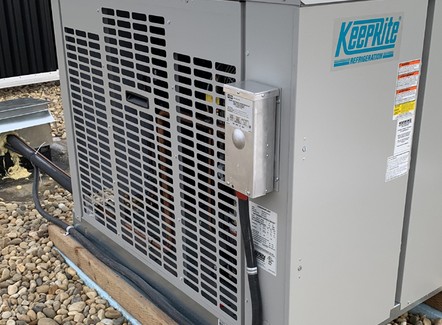
**Introduction**
Commercial refrigeration plays a vital role in the food and beverage industry, but its energy consumption and environmental impact have raised concerns. As the world faces the challenges of climate change, it is imperative to explore sustainable cooling solutions for commercial refrigeration.
**Challenges and Opportunities**
Traditional refrigerants, such as hydrochlorofluorocarbons (HCFCs) and hydrofluorocarbons (HFCs), have high global warming potential (GWP). Their use has been phased out under the Montreal and Kigali Protocols. However, some older systems still use these refrigerants, contributing to greenhouse gas emissions.
The transition to greener refrigerants with lower GWP, such as natural refrigerants (e.g., CO2, hydrocarbons) and synthetic refrigerants (e.g., hydrofluoroolefins, ammonia), is a significant step towards sustainable cooling. These refrigerants have a negligible impact on the environment and reduce energy consumption.
**Innovative Green Solutions**
Several innovative green solutions are emerging in commercial refrigeration:
* **Transcritical CO2 Systems:** Transcritical CO2 systems use carbon dioxide (CO2) as the refrigerant, which has a very low GWP. They offer high energy efficiency and are suitable for large-scale refrigeration applications.
* **Hydrocarbon Refrigerants:** Hydrocarbons, such as propane and isobutane, are natural refrigerants with excellent thermodynamic properties. They are highly energy-efficient and have low GWP.
* **Ammonia Refrigeration:** Ammonia has been used as a refrigerant for over a century. It is a highly efficient and low-GWP refrigerant, but requires careful handling due to its toxicity.
* **Variable Speed Compressors:** Variable speed compressors adjust their speed to meet cooling demand, reducing energy consumption. They are particularly effective in applications with fluctuating loads.
* **Energy-Efficient Lighting and Fans:** LED lighting and high-efficiency fans can significantly reduce energy consumption in refrigeration units.
**Benefits of Sustainable Cooling**
Adopting sustainable cooling solutions offers numerous benefits, including:
* **Reduced Greenhouse Gas Emissions:** Green refrigerants and energy-efficient technologies significantly reduce greenhouse gas emissions, contributing to climate change mitigation.
* **Lower Energy Costs:** Sustainable cooling systems consume less energy, resulting in lower operating costs for businesses.
* **Enhanced Product Quality:** Proper refrigeration maintains food and beverage quality, reducing spoilage and waste.
* **Regulatory Compliance:** Governments worldwide are implementing regulations to phase out high-GWP refrigerants. Sustainable cooling solutions ensure compliance with these regulations.
**Conclusion**
The future of sustainable cooling lies in the adoption of green solutions that minimize environmental impact while maximizing energy efficiency. Transcritical CO2 systems, hydrocarbon refrigerants, ammonia refrigeration, variable speed compressors, and energy-efficient lighting and fans are innovative technologies that offer significant benefits for commercial refrigeration. By embracing these solutions, the food and beverage industry can contribute to a more sustainable and environmentally friendly future.
Serving Edmonton’s Businesses & Residents. Competitive Rates, Expert Workmanship. 24/7 Furnace repair
Premium Refrigeration & Air Conditioning Ltd stands out as the Industry-leading Safety Inspection Specialists, all fully-licensed and certified.
For More Details Call (780) 729-9020

